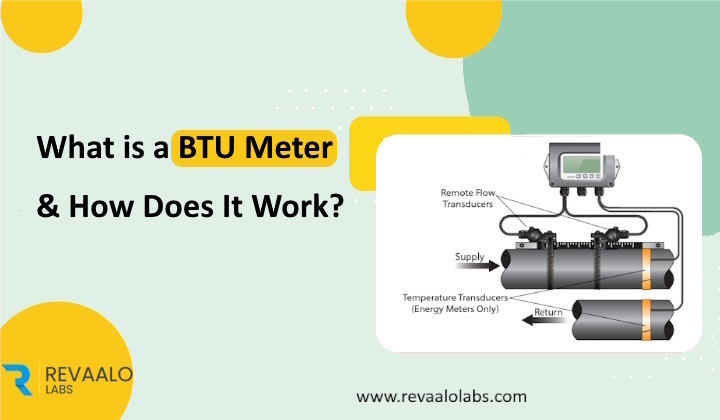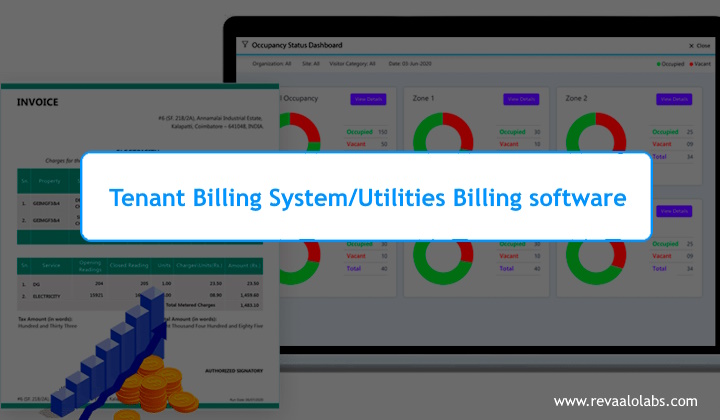#BTUMeter

A BTU (British Thermal Unit) meter measures the amount of thermal energy transferred in a heating or cooling system. The technology is widely used in HVAC (Heating, Ventilation, and Air Conditioning) systems, district heating and cooling systems, and industrial processes where accurate energy measurement is essential to efficiency and billing.
What is a BTU Meter?
BTU meters are flow meters with temperature sensors added to measure the energy consumption of any liquid heating or cooling system. There are two temperature sensors, a flow sensor, and a calculator in the BTU meter.
There is one temperature sensor at the inlet and another at the outlet of the heat exchanger. Flow sensors measure the rate at which liquid passes through heat exchangers.
BTU Meter Types
There are several types of BTU meters available, each designed for specific applications and operating conditions. Here are some of the common types of BTU meters:
Here`s How a BTU meter works:
1. Measurement Components:
In general, a BTU meter is composed of two temperature sensors, a flow meter, and an electronic calculator. It is common to place two temperature sensors at the inlet and outlet of a fluid (such as water) to measure its temperature, while a flow meter measures its flow rate.
2. Temperature Differential:
The temperature sensors measure the difference between the temperature of the fluid entering and leaving the system. Temperature differentials play a key role in calculating the amount of thermal energy exchanged.
3. Fluid Flow Rate:
Flow meters measure the rate at which fluid passes through a system. This information is crucial in determining the amount of energy being transferred over a specific time period.
4. Calculation of Thermal Energy:
A flow meter measures the rate at which fluid passes through a system. In order to determine the amount of energy transferred over a certain period of time, this information is crucial.
Energy (in BTUs) = Mass Flow Rate × Specific Heat Capacity × Temperature Differential
Where:
Mass Flow Rate: The rate at which the fluid is flowing through the system. Specific Heat Capacity: The amount of energy required to raise the temperature of a unit mass of the fluid by one degree. Temperature Differential: The difference in temperature between the fluid`s inlet and outlet.
5. Display and Output:
A BTU meter`s screen displays the calculated energy value, allowing users to monitor energy consumption or exchange in real time. Additionally, some advanced BTU meters have communication capabilities for transmitting data to central control systems or energy management software.
6. Accuracy and Calibration:
In order to manage and bill energy effectively, accurate measurements are essential. It is necessary to calibrate BTU meters over time in order to maintain their accuracy. The precision of the measurements is maintained through regular maintenance and calibration.
Advantages of BTU Metres
Here are some of the key advantages of using BTU meters:
In essence, a BTU meter works by combining information about the temperature differential and fluid flow rate to calculate the thermal energy exchanged. This data is valuable for efficient energy management, system optimization, and accurate billing in various applications.
Hope you liked it. If you have any requirement related to BTU Meter with your platforms feel free to connect with Revaalo labs your one stop solution for Digital Transformation needs.

One of the most critical decisions website developers must make is deciding what unit of measurement to use when sizing elements, fonts, and other design properties.
Read more
It`s an amazing technology-one that will help us solve society`s toughest problems and reshape the world.
Read more13
December

Today, web browsers play a significant role in our lives, providing us with access to a world of information and possibilities.
Read more
Power BI is a popular business intelligence tool developed by Microsoft for data visualization and analysis. While Power BI is a robust solution, there are several alternatives available that cater to different needs and preferences.
Read more09
October

Tenant billing systems are software solutions used by property owners, managers, and landlords to accurately bill tenants for their usage of utilities and services.
Read more